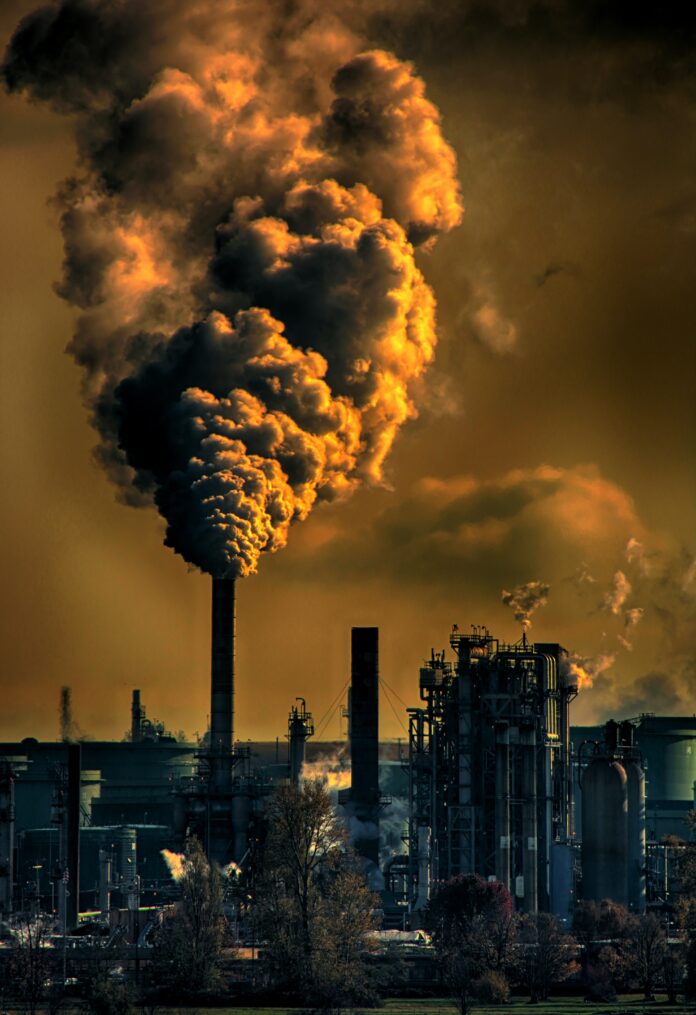
By
Humans can’t live without breathing — we need oxygen to survive. But thanks to smoke belching out of vehicle tail pipes and emissions from factories, oil refineries, and power plants, we’re also breathing in toxic chemicals such as ozone, benzene, carbon monoxide, nitrogen oxides, hydrocarbons, and soot.
Now a new study published in “The New England Journal of Medicine,” and led by the Harvard T.H. Chan School of Public Health, confirms that although everyone would be healthier if we had cleaner air, the health of Black people might improve most — including a lower risk of premature death.
The study’s researchers analyzed Medicare data for 73 million Americans aged 65 and older and focused on the impact of fine particulate air pollutants — or PM2.5 — on mortality.
They found that lowering the EPA standard of 12 micrograms of PM2.5 to 8 micrograms has the potential to reduce the mortality rate for white higher-income Americans by 4%. In comparison, higher-income Black Americans could see their mortality drop significantly more — by 7% — and both Black and white low-income adults could see a 6% reduction in mortality.
“Structural racism seems to matter more than poverty when determining the health effects of air pollution,” co-lead author Kevin Josey, a postdoctoral research fellow in the Harvard University department of biostatistics, said in a statement.
Black people are 75% more likely to live near facilities that produce toxic waste and air pollutants compared to other groups. Indeed, with air quality as it is, Black children suffer from asthma at higher rates than white children, and Black people are 37% more likely to have lung cancer than other racial groups.
“Structural racism seems to matter more than poverty when determining the health effects of air pollution,”
KEVIN JOSEY, HARVARD UNIVERSITY DEPARTMENT OF BIOSTATISTICS
The study was inspired by a two-part Environmental Protection Agency report last year that found that the air pollution rules were not strong enough to protect public health.
The findings confirm previous research on the negative health effects of dirty air. In 2018, the EPA released research that found Black people are three times as likely to die from air pollution compared to white people.
This environmental racism happens “when we allow health disparities to fester, when we allow certain groups of people to suffer disproportionate harm for no other reason than the color of skin,” Aaron Bernstein, the associate director of the Center for Health and Global Environment at the Harvard School of Public Health tells Word In Black.
Sacrifice Zones
The EPA has long known exactly what’s happening to Black folk due to dirty air.
For example, In 2018, ProPublica released a sobering story revealing the extent and spread of air pollution throughout an 85-mile stretch of factories, oil refineries, and petrochemical plants known as “Cancer Alley.”
The researchers ProPublica spoke with called the areas affected “sacrifice zones — for polluting.”
In 2022, ABC News reported that the EPA knows that Cancer Alley residents — who are predominantly Black — have a 95% higher risk of cancer compared to the rest of the country as a result of air pollution.
Over the years, residents in Norco, Louisiana, which is located in Cancer Alley, have reported seeing a cloud of black smoke stretched across the sky. The Shell Norco Manufacturing Complex in Norco — located in a Black part of town on a former antebellum plantation site — is one of the nation’s largest petrochemical facilities in the United States.
According to Norco Ambient Air Monitoring, which has a particulate matter hourly data table, at noon on March 31, the PM 2.5 rate was 23 — well above the EPA limit of 12 — at the American Legion Hall in the town.
Taking Action
Jeremy Orr, the director of litigation and advocacy for Earthjustice, a nonprofit public interest environmental law organization, says the existence of places like Cancer Alley drive his work.
“Our children have higher rates of asthma. Our children will have higher rates of absences in schools due to respiratory-related diseases. The direct health and financial implications are dire,” Orr says,
Orr says Black people, particularly young Black people, “need to be civically engaged” and push back on political decision-making regarding air pollution.
“Continue to lift up these issues, and don’t be afraid to call out environmental racism,” Orr says.
Meanwhile, Francesca Dominici, the senior author of this latest study and the Clarence James Gamble professor of biostatistics, population, and data science and co-director of the Harvard Data Science Initiative, said in a statement that the EPA needs to step up.
“We have a shared responsibility to safeguard the air we breathe and to protect our more vulnerable community members from the effects of climate change,” Dominici said. “Bold action from the EPA to establish a substantially stronger NAAQS for PM2.5 air pollution is a pragmatic, proven way to clean up our air, reduce the impact of climate change on human health, and drive innovative climate change solutions.”


